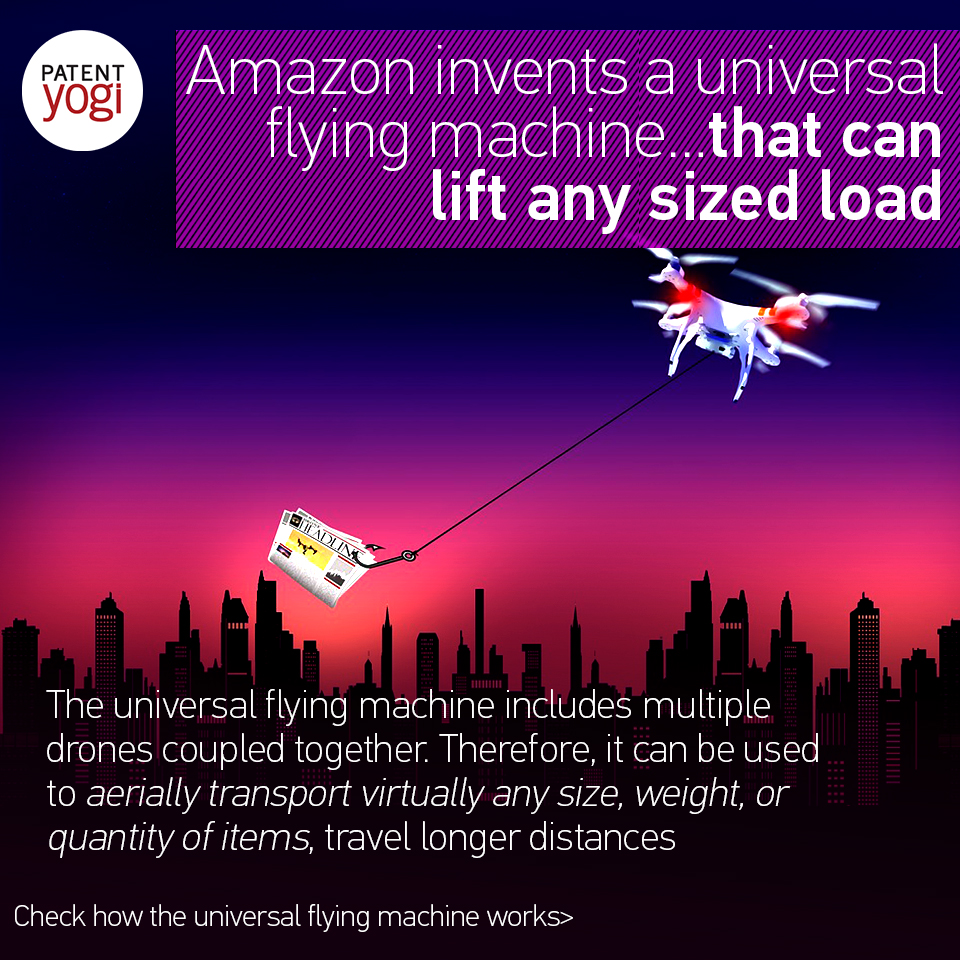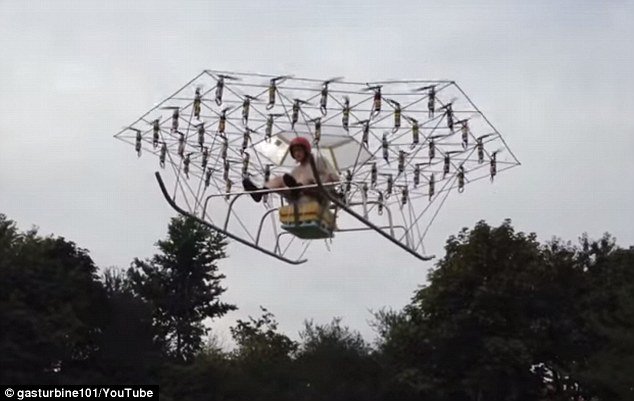Amazon has big plans for using drones for deliveries. We have covered many drone related patents from Amazon this year including “birdhouses” for drones, drones to replace police dogs and drones driven by multiple fuels.
One key challenge with using drones for deliveries is that the size of delivery packages varies a lot. However, drones are often designed to carry a payload and to remain airborne for a specified duration of time. For example, many quad-copters are designed to carry a payload of up to ten pounds and remain airborne for up to thirty minutes.
To carry larger payloads over longer distances, larger drones are required. Therefore, it becomes difficult to design drones for various sizes of delivery packages.
Amazon has solved this problem by inventing a universal flying machine that can potentially carry any sized load and deliver over longer distances.
The patented technology allows for coupling drones together to form a collective drone. A collective drone can be used to aerially transport virtually any size, weight, or quantity of items, travel longer distances, etc. For example, rather than using one large drone to carry a larger or heavier item, multiple smaller drones may couple together to form a collective drone that is used to carry the larger or heavier item.
When the collective drone reaches the delivery area, the individual drones may decouple to travel to different destinations. By aerially navigating as a collective drone, the coupled drones share resources (e.g., computing resources, power, navigation, etc.), be more efficient, be more visible, generate larger radar or object detection, be more detectable by ground based radar or air traffic control, etc. For example, a collective drone that includes multiple coupled drones (e.g., twenty) will be more visible to other aircraft as well as air traffic control, thereby improving safety for the drones and other aircraft. Likewise, when multiple drones are coupled to form a collective drone, some of the drones may reduce the rotational speed of one or more of their motors, relying on the lifting force of the collective drone, thereby reducing the overall energy consumed during aerial navigation.
Further, some configurations of the collective drone may improve the aerodynamics of the collective drone.
Earlier this year, Boeing received a patent for a similar technology. It will be interesting to see if this leads to a drone patent war between Boeing and Amazon in near future.
Publication number: US 20160378108
Patent Title: Collective Unmanned Aerial Vehicle Configurations
Publication date: 29 Dec 2016
Filing date: 19 Feb 2015
Inventors: Nathan Michael Paczan; Michael John Elzinga; Raphael Hsieh; Luan Khai Nguyen;
Original Assignee: Amazon Technologies, Inc.




